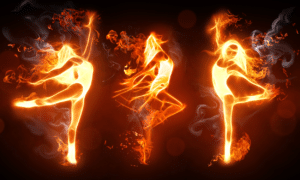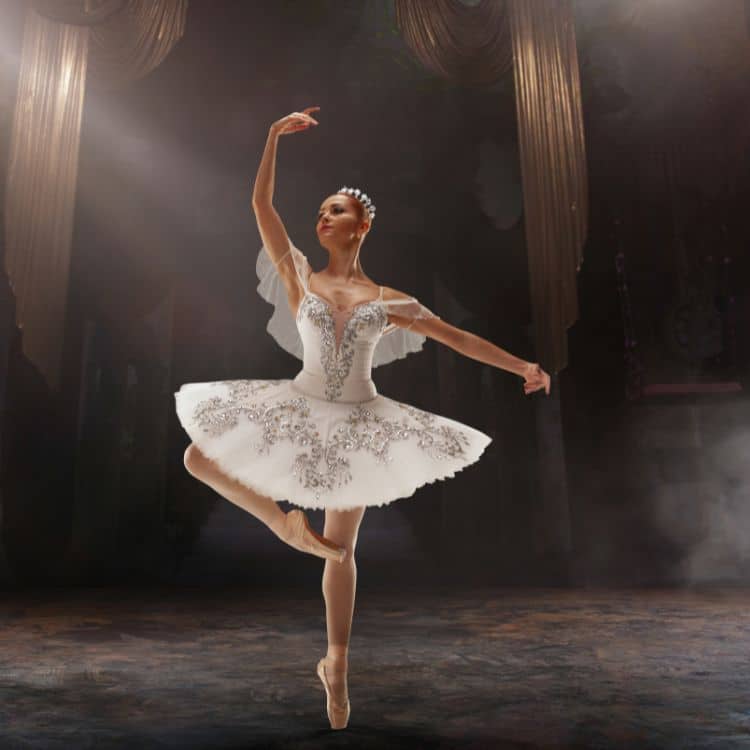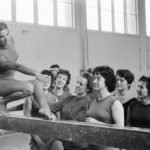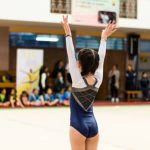
Is gymnastics harder than dance? It’s a question I get asked quite a lot when people first inquire about joining one of our classes. Gymnastics and dance share many common features like stretching and basic shapes but many things also set them apart.
In this article, we will explore the differences between gymnastics and dance, the physical demands of each, and the amount of training required for both.
Dance V Gymnastics
Gymnastics and dance are two distinct disciplines that have their own set of rules and movements. Gymnastics is a sport that focuses on strength, flexibility, and acrobatic skills. Female gymnasts are indeed expected to include dance within floor routines and to a lesser extent on the beam .
However, gymnasts also perform routines on apparatus such as the vault and bars which have zero requirement for dance. The focus on such apparatus is strength and power and displaying high levels of acrobatic skill.
Dance, on the other hand, is an art form that focuses on expressing emotions and telling stories through movement. Dancers perform routines on stage with music and often incorporate various styles such as ballet, contemporary, hip-hop, or jazz.
If you examine gymnastics and dance even closer then you will see that there are multiple types or disciplines within each.
Gymnastics has Artistic, Rhythmic, Tumbling and more.
Dance has dozens of styles some more well-known than others and some are practiced professionally whilst others can be considered only hobbies.

Physical Demands of Gymnastics
Gymnastics requires a high level of physical fitness and strength. Gymnasts must have a strong core, upper body, and lower body strength especially if they are an Artistic gymnast training on bars or rings.
The only way to physically perform skills such as giants or levers is by developing strength and power over a long period.
Gymnasts must also learn how to perform acrobatic skills such as flips, twists, and aerials. These types of skills need body tension and strong ankles and wrists to cope with the impact of landing.

The physical demands of gymnastics put a lot of stress on the body and can lead to injuries such as sprains, strains, and fractures.
Physical Demands of Dance
While dance also requires strength and flexibility, the physical demands of dance are less intense than those of gymnastics. Dancers must have good posture, balance, and coordination, as well as the ability to move gracefully and expressively.
Dancers usually use harder, non-sprung floors to perform which most people would agree is tougher than a sprung gymnastics floor. But as a result, most dancers will not learn acrobatic or tumbling skills to the same level as gymnasts.

Dance can also be physically demanding, especially when performing high-intensity routines, but the risk of injury is generally lower than in gymnastics.
Strength Required in Gymnastics and Dance
Both gymnastics and dance require a certain level of strength. In gymnastics, strength is needed to perform the various acrobatic skills and routines on the apparatus. Gymnasts must have the strength to support their body weight, as well as the strength to perform flips and twists in the air.
In dance, strength is required to maintain good posture and control, as well as to perform lifts and jumps. However, the amount of strength required in dance is generally less than in gymnastics.

Retirement Age in Gymnastics and Dance
Retirement age in gymnastics and dance varies depending on the individual and their goals. In gymnastics, the retirement age is typically in the late teens or early twenties. This is because the physical demands of gymnastics put a lot of stress on the body, and many gymnasts choose to retire early to avoid injury and pursue other career paths. In dance, retirement age is typically later, around the mid-thirties or early forties.
This is because dance is generally less physically demanding than gymnastics, and many dancers can continue to perform and teach well into their thirties and beyond.
Training Required in Gymnastics and Dance
Both gymnastics and dance require a significant amount of training. Gymnasts must train for several hours a day, several days a week, to develop the strength, flexibility, and skills needed to perform at a competitive level. Dancers also train for several hours a day, several days a week, to develop their technique, strength, and artistry.
However, the amount of conditioning training required in gymnastics is generally more intense than in dance.
Especially for those gymnasts working on Artistic apparatus such as bars or beam.
To master an advanced skill like multiple twisting multiple somersaults takes years of progressions and building up strength and aerial awareness.
Artistic and Rhythmic gymnasts also have to dance as part of their floor routines which means a portion of their training schedule is also dedicated just to dance especially ballet-type training.
Conclusion
In conclusion, while both gymnastics and dance are challenging physical disciplines, gymnastics is generally considered to be harder due to its intense physical demands and the amount of training required.
The physical demands of gymnastics put a lot of stress on the body and can lead to injuries, which is why many gymnasts retire early. Dance also requires strength and training, but the physical demands are generally less intense than in gymnastics.
In the end, whether gymnastics or dance is harder ultimately depends on the individual’s goals, strengths, and preferences. Both disciplines require dedication, hard work, and passion. However, based on the differences in physical demands and training requirements, it can be concluded that gymnastics is generally considered to be the harder of the two.
FAQs
Is Dancing harder than sports?
Dancing is often overlooked as a sport due to it being scored subjectively by judges at competitions. Plus many people dance for recreation rather than competition. However, if you want to become a highly trained dancer you should be prepared for a training regimen as hard as many other sports.
Can you be a gymnast and a dancer?
You can be both a gymnast and a dancer as many features are transferable between the two. Balance, coordination and flexibility are a few examples of things that both dancers and gymnasts need.
What is the closest sport to gymnastics?
The closest sports to gymnastics are dancing, diving, figure skating and cheerleading.
- A Complete Guide to Gymnastics Hand RipsAre you tired of dealing with painful gymnastics rips on your hands from training? Look no further – this article offers a comprehensive approach to… Read more: A Complete Guide to Gymnastics Hand Rips
- Is Gymnastics Dangerous? (Facts and Comparisons)Gymnastics is acknowledged as a highly technical and physically demanding sport. It inherently carries a risk of injury, which is why most coaches and clubs… Read more: Is Gymnastics Dangerous? (Facts and Comparisons)
- The Fascinating Evolution of Gymnastics (History and Facts)Gymnastics is a sport that has been around for centuries and has evolved significantly throughout history. From its origins in ancient Greece to the modern-day… Read more: The Fascinating Evolution of Gymnastics (History and Facts)
- The Ultimate Parallel Bars Skills ListParallel bars are one of the most challenging events in men’s gymnastics. Mastering the right moves first on parallel bars is essential to improving your… Read more: The Ultimate Parallel Bars Skills List
- The Long-Term Effects of Gymnastics on the Body (A Complete Guide)While gymnastics can offer many benefits, such as improved fitness and self-confidence, many people also ask what are the Long-Term Effects of Gymnastics on the… Read more: The Long-Term Effects of Gymnastics on the Body (A Complete Guide)
- What Age Does Competitive Gymnastics Start?Ever wondered what age does competitive gymnastics start? It’s well known that gymnasts start training at a young age to develop the skills and strength… Read more: What Age Does Competitive Gymnastics Start?






